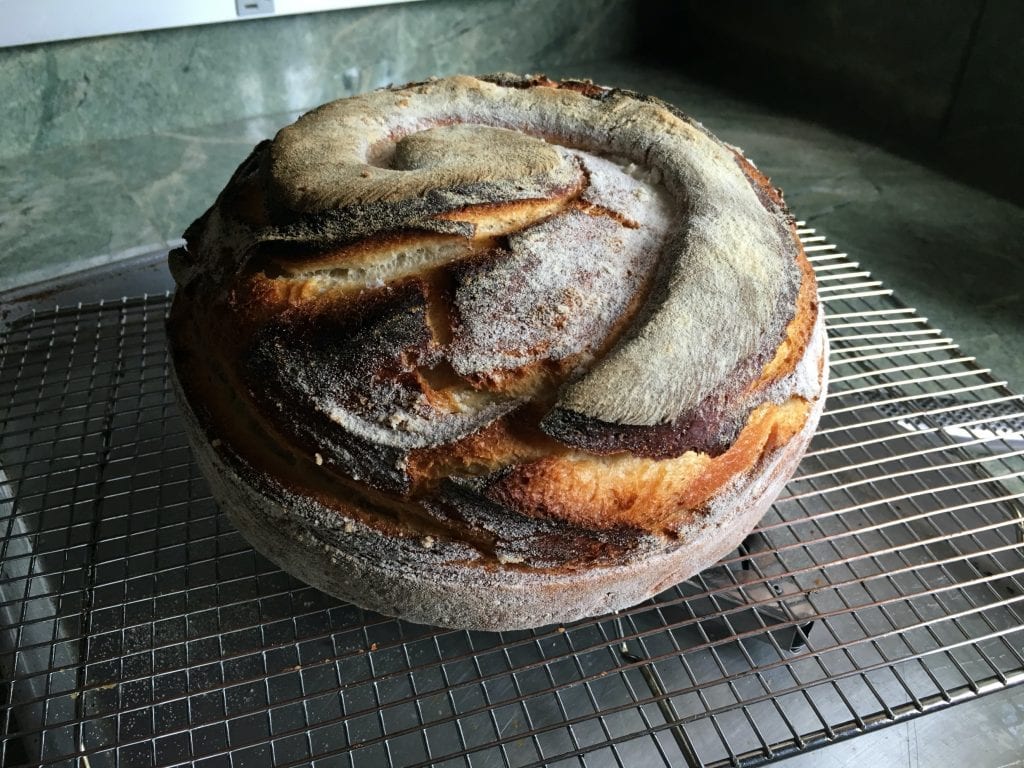
Maybe the pandemic has given you your fill of sourdough. If you haven’t jumped on the bandwagon, though, here’s a new reason to give it a try. With a donation to United Cerebral Palsy of Los Angeles, you can receive a free batch of sourdough starter.
UCPLA board member JJ Levenstein, a retired pediatrician who goes by “Dr. JJ,” developed this starter in her home kitchen 10 years ago and wants to share it. “Everybody’s baking and breaking bread now with great vigor. Everybody wants a starter, and my starter has a story,” she says.
The craving for good bread comes straight from Levenstein’s San Francisco childhood. “Every day, I would walk the six blocks to school and pass the Boudin bakery, one of the oldest sourdough bakeries in the world. And I would, for 10 cents, get a sourdough roll right out of the oven,” she says. She moved to L.A. 35 years ago and, unable to find that childhood bread, started on her sourdough path.
After selling her pediatrics practice, Levenstein decided to attend cooking school. And four years ago, she started teaching classes at BLVD Kitchen in Sherman Oaks. When the classes transitioned online due to the pandemic, she decided to dry and package her starter so that she could send it out to her Zoom students.
She was successful, and decided to send the starter, named “Bev” after Levenstein’s mom (who also grew up in San Francisco and also loved sourdough), to UCPLA donors. When you make your donation, include “DrJJ Sourdough” in the “in honor of” section of the online donor form. Levenstein will send you a batch of starter and even cover shipping. Your personal batch of “Bev” will come with instructions on how to revive her and how to keep her alive, which Levenstein says is the tricky part. “It’s basically like feeding a world of microbes,” she explains.
The instructions include her email address. “I’m like the butterball turkey hotline,” Levenstein says. “If you need to know what to do with this or you think you’ve killed your starter, don’t throw it away. Email me first.”
The starter can be used in many different recipes. You can join BLVD Bread Bakers, led by Levenstein, for a new online class about every three weeks.
You can also give this classic loaf a try. You will need a 4-5 quart Dutch oven with heat-proof lid, a sharp knife, a stand mixer with dough hook (or a big bowl, wooden spoon and lots of muscle). You’ll get the best and most consistent results if you weigh the ingredients using a food scale, but we’ve provided other measuring options as well.
Levenstein reminds bakers that many things – temperature, humidity, how active your starter is, the quirks of your oven – can impact the way your bread turns out. Each loaf will be different and not every loaf will come out perfect. “When it does, have a notebook and write down exactly what happened that day,” she says.
Think of this recipe as a beginner canvas that you can sculpt as you gain confidence. “You can start adding things to this recipe,” she says. “You can throw in roasted garlic or chopped herbs or sun-dried tomatoes or dried fruit. At the end of the day, the worst thing that can happen is that you make croutons out of it.”
Classic Sourdough Loaf

500 grams (4 cups, spooned in and leveled) all-purpose
or bread flour
200 grams (3/4 cup) bubbly sourdough starter
350 grams (1 ½ cups) water
15 grams (2 ½ teaspoons) sea salt
About ¼ cup cornmeal for dusting
¼-½ cup rice flour (optional)
Mix all ingredients except the cornmeal and rice flour in a bowl or the bowl of a stand mixer. Mix by hand or using the mixer and the dough hook until all of the flour is hydrated/moistened and the dough comes together in a ball.
Remove the dough to a big bowl, cover with plastic wrap and let rest for an hour.
After the dough rests, with wet hands pull the dough up from the bottom of the bowl and fold it in on itself. Rotate the bowl a quarter turn and repeat, then turn and fold two more times for a total of four folds. Let the dough rest, covered, then repeat this process every 15 minutes for an hour. When you have completed your final set of folds, let the dough rest, covered, in the refrigerator overnight.
The next day, take the dough out of the refrigerator and let it rest on the counter, covered, for one hour. Lightly flour your counter and gently turn the dough onto the flour. Push the dough into a rectangle, and fold it into thirds, like a letter. Cover with a tea towel or inverted bowl and let rest 10 minutes. Turn it a quarter turn and fold the top edge into the middle and the bottom edge into the middle. You will have a square. Now bring the bottom and top edges together, crimping them into a seam. Turn the dough seam side down and gently roll it into an oblong shape.
Spray your Dutch oven/pot and coat the bottom with cornmeal. Put the loaf, seam side down, in the pan, cover, and let rise for 2-3 hours. The dough is ready for baking when an imprint from your finger springs back about halfway.
Preheat the oven to 475 degrees. Just before baking, dust the top of your loaf with a little flour (or rice flour, if you have it), spritz with water, slash it from top to bottom with a knife (or cut a spiral on the top), cover and put in the oven.
Bake, covered, for 25 minutes, then uncovered for 25-30 minutes until crust is deep brown. Remove to a rack to cool for an hour. The loaf will continue to crackle, evaporate a little moisture and cook a little more.


























